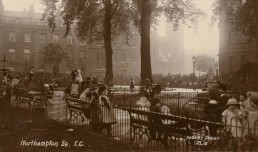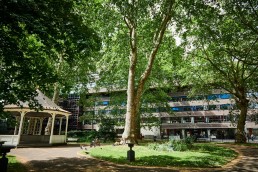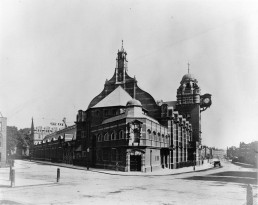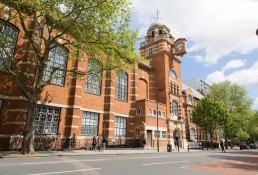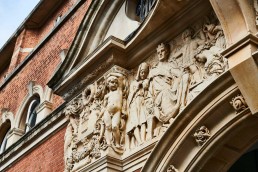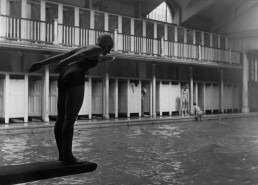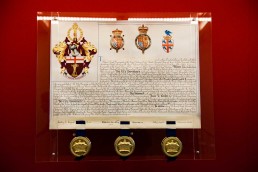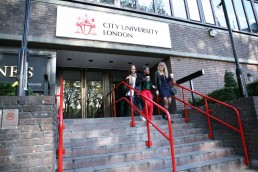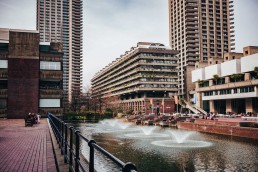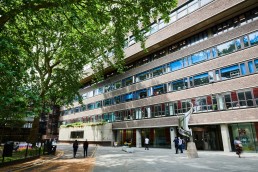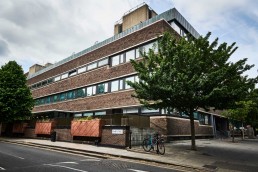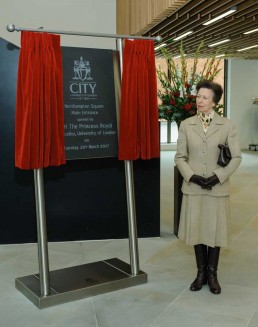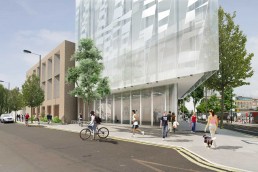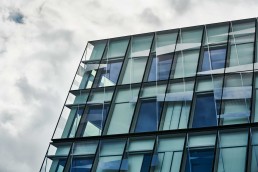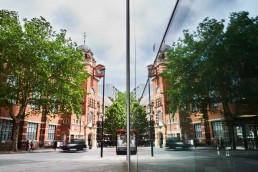Changing spaces: Estate developments over City’s 125 year history
Features | By Eleanor Waithe-Arnold
It began with a generous donation of a one-and-a-quarter acre site in Northampton Square by the Marquess of Northampton at the end of the 19th century and it has grown into a 21st century multi-million pound, multi-site campus.
Creating world-class facilities which respect the historic and now densely populated surroundings of the local area is the task facing City’s Estates Development Team. With the construction of the flagship new Law School building taking shape, This is City looks back over 125 years of changing spaces.
Construction of the Northampton Institute began with the College Building in 1894, a Grade II listed building designed by EW Mountford, The Old Bailey’s Architect. The original style of the building has been referred to as ‘free French Renaissance’ but it incorporates other movements such as Arts and Crafts and the Queen Anne revival style; and classical influences which can be seen in the impressive frieze above the main entrance.
Media gallery
Preserved footage from 1952 to 1956 of the rebuilding of the old gymnasium and the Great Hall following damage during World War II has been digitised.
While the construction methods and site arrangements appear quite rudimentary and even unsafe by today’s Health and Safety standards, the methodology would have been considered innovative for the period and the works formed part of the first major expansion of the campus.
As the Institution grew after it was granted university status by Royal Charter in 1966, the estate grew too.
During this time, City began offering a wider range of programmes to evolve into an institution dedicated to engineering, science, business, computing and management studies. The additional programmes and the growing number of students required a new and much larger space that would continue to enrich the experiences of staff and students alike.
Overlooking the Georgian Northampton Square, the new University Building was added in 1970, shortly after completion of the Drysdale and Centenary Buildings. In stark contrast to the more classical design of College Building, the new buildings feature Brutalist façades, an architectural style quite common in the local area at the time, such as at close neighbour, the Barbican.
The period 2012 to 2017 saw unprecedented change around the estate and a considerable investment of almost £120 million. The greatest recent changes in modernisation and physical appearance took place during this period, culminating in the opening of the transformed Northampton Square main reception and Pavilion, opened by Her Royal Highness the Princess Royal, Chancellor of the University of London, in 2017.
The area became a much-needed open space for students, staff and visitors to meet, share ideas and collaborate; and represented the enhanced physical and figurative hub of the University.
Included in this development period was the renovation of the CitySight Clinic, part of the Optometry Department. The refurbished clinic, located on the corner of Ashby Street and Goswell Road, provides free eye testing and other services for members of the local community.
Taking into consideration existing buildings which contribute to the Northampton Square Conservation Area, such as the 1923 Myddelton Building, the new site will see a complementary pairing of old and modern architectural designs unified around a central atrium.
City’s estates team is continually looking for ways to improve existing spaces and find opportunities to expand in what will always be challenging conditions. Whether through refurbishment, enhancing technology, repurposing rooms or even extending underground or onto the roof, vision and innovative thinking is required to address the evolving study habits of students and staff ways of working to ensure all available space continues to be used effectively.
From free French Renaissance, through Arts and Crafts, to Brutalist and expressive, City’s buildings tell a story of the changing trends in architecture over 125 years. You can come and see the trends for yourself, when City participates in Open House on Saturday 21st September.
